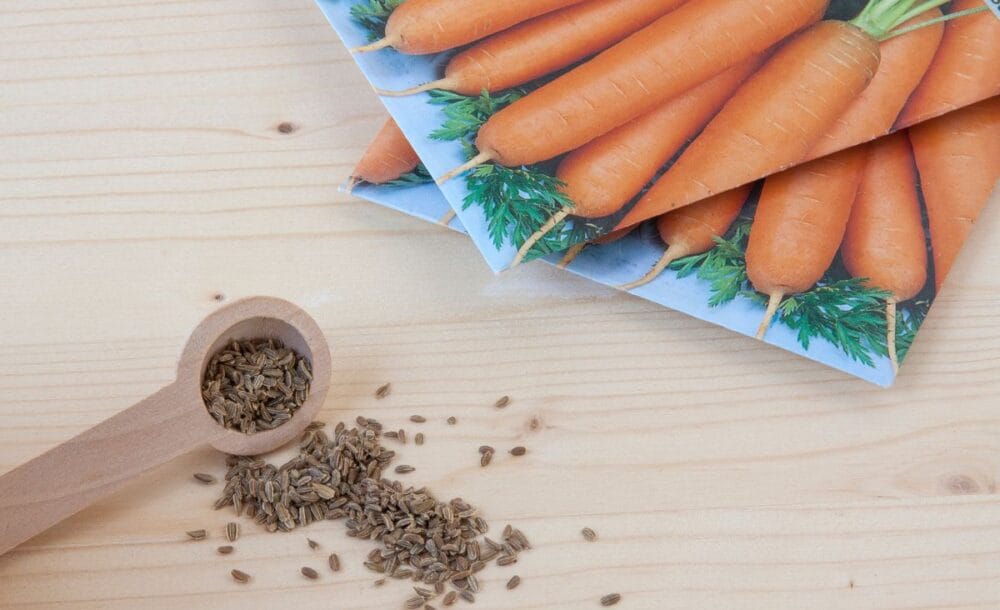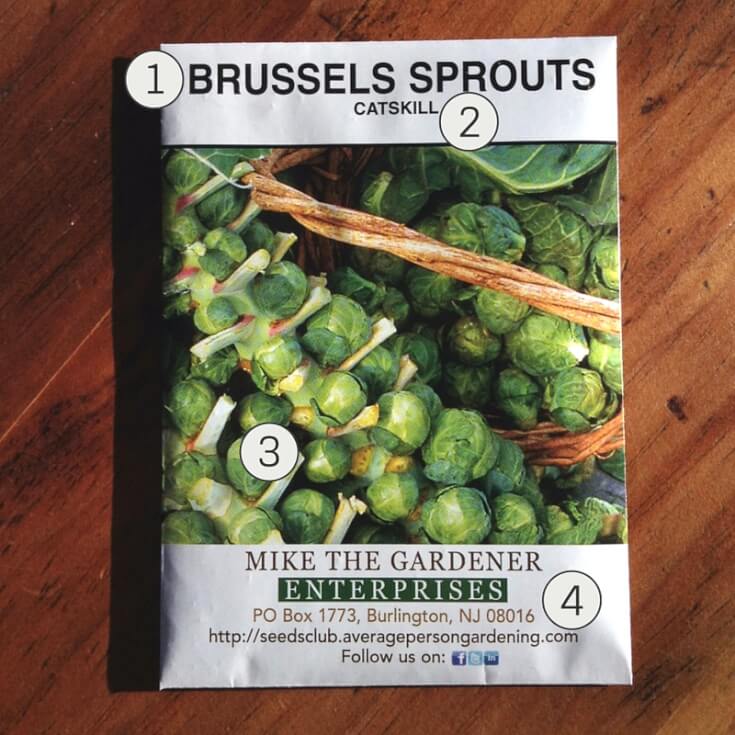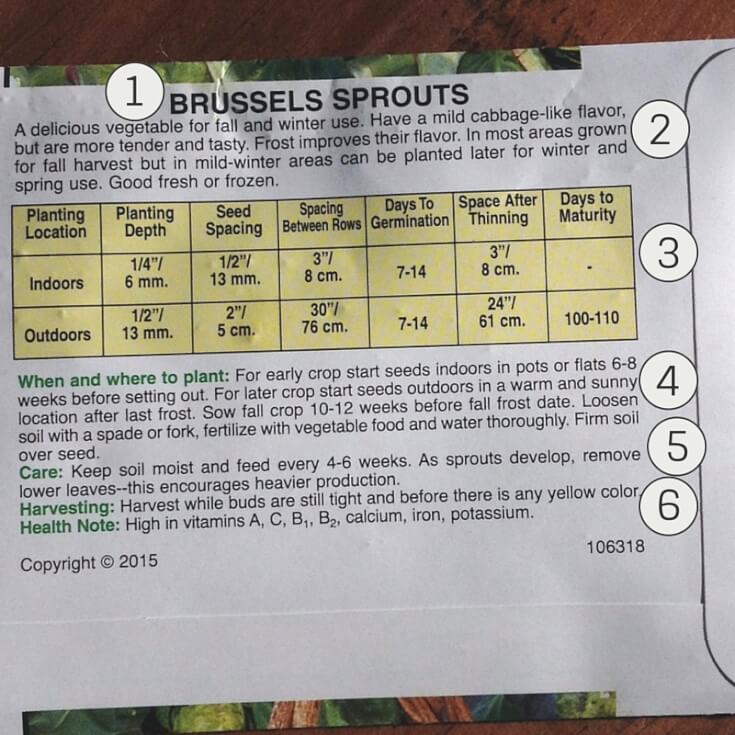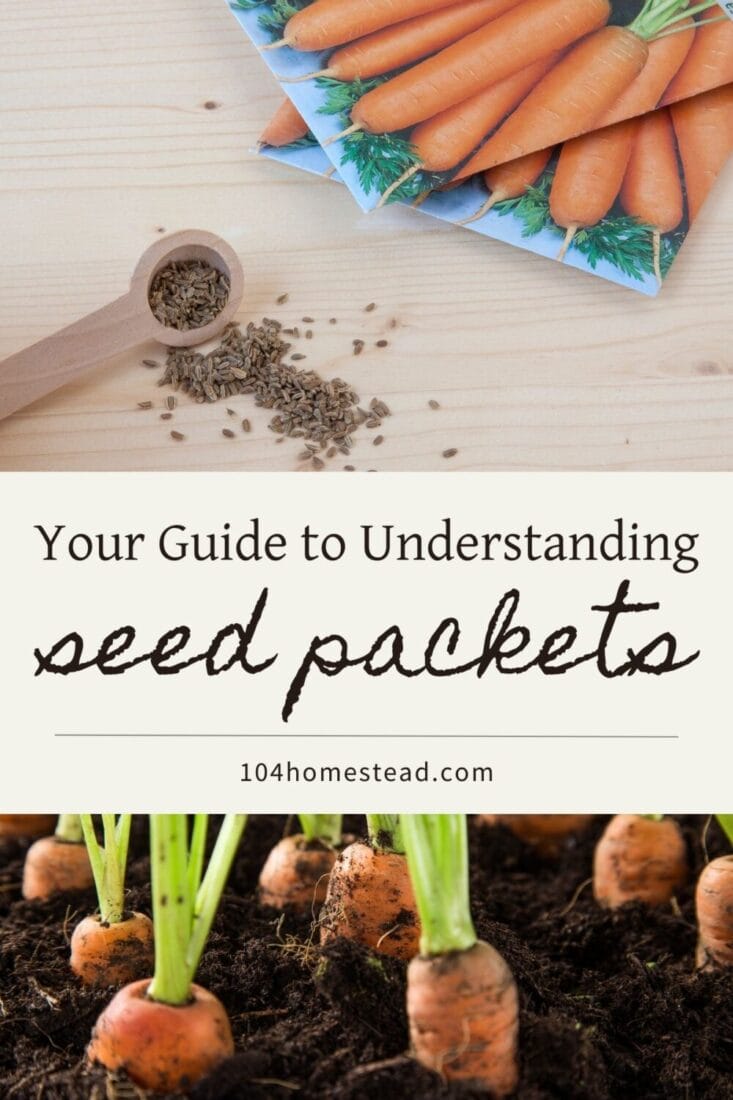Your Guide to Reading and Understanding a Seed Packet
Learn all about seed packets! From determinate vs. indeterminate to heirlooms and hybrids. Learn to read, sow, and grow with confidence.

Much like a recipe is only as good as its ingredients, a garden is only as good as its seeds. Choosing seeds can be quite overwhelming. I’m hoping today’s post will make it a simpler process. I’ll cover where to get your seeds, how to choose the type you want, and, best of all, I’ll cover what the jargon on the seed packet means.
Cracking the Code: Types of Seeds
Getting into gardening means understanding the different types of seeds. Let’s break down terms like determinate, indeterminate, GMO, heirloom, hybrid, and organic. Knowing these terms helps you make informed choices for your garden.
Determinate vs. Indeterminate
When it comes to the growth patterns of plants, two terms stand out: determinate and indeterminate.
Determinate Growth: Plants with determinate growth have a predetermined size limit. Once they reach a specific height, they stop growing vertically. This characteristic is particularly beneficial for those with limited space, such as container gardeners or individuals cultivating plants in smaller garden beds. Determinate plants, like certain varieties of tomatoes, offer a more compact structure, making them well-suited for confined spaces.
Indeterminate Growth: On the flip side, plants with indeterminate growth don’t adhere to a height limit. They continue growing upward until the arrival of the first frost. This trait is advantageous for those with ample space or those who want an ongoing harvest throughout the growing season. Indeterminate plants, such as certain tomato varieties, keep reaching for the sky, providing a continuous supply of fruits over an extended period.
When deciding between determinate and indeterminate plants, consider the available space in your garden. If you have limited room or are cultivating in containers, determinate varieties might be the practical choice. However, if space is not a concern and you enjoy a more prolonged harvest, indeterminate plants could be the perfect fit for your garden. Understanding these growth patterns ensures that you make informed choices aligned with your gardening goals.
GMO
Diving into the world of seed varieties, we encounter genetically modified organisms (GMOs), seeds with altered DNA.
This term sparks curiosity, inviting gardeners to delve into the GMO debate and explore the implications of these scientifically modified seeds. GMOs have become a focal point of discussions surrounding agriculture, with proponents emphasizing increased crop yields and resistance to pests, while skeptics raise concerns about potential environmental and health impacts.
As a gardener, understanding the intricacies of GMOs empowers you to make informed choices aligned with your values. Unveiling the layers of the GMO debate allows you to navigate the seed landscape with a discerning eye, ensuring your garden reflects your green thumb and your thoughtful consideration of the broader agricultural conversation.
Heirloom, Hybrid, and Organic
Seed choices extend beyond growth patterns and encompass the fascinating realms of heirlooms, hybrids, and organics.
Heirloom Seeds: Heirlooms aren’t just seeds; they’re tales from the past. These seeds come from plants that have weathered the passage of time, often passed down through generations. Heirlooms boast a rich history, preserving unique flavors and characteristics. Gardeners who appreciate a connection to the past and the charm of stories embedded in their plants often opt for heirloom varieties.
Hybrid Seeds: Hybrids, on the other hand, are the result of intentional matchmaking. Plant breeders carefully cross-pollinate two different varieties to accentuate desirable traits. The goal is to create plants with improved features like disease resistance, higher yield, or uniformity. Hybrids offer predictability in characteristics, making them popular for those seeking specific plant qualities in their gardens.
Organic Seeds: In the realm of organics, seeds follow a strict set of rules. Organic seeds are grown without synthetic fertilizers or pesticides and must adhere to organic farming practices. Choosing organic seeds aligns with a commitment to environmentally friendly and sustainable gardening. For those who prioritize natural processes and eco-conscious cultivation, organic seeds are the foundation for a garden rooted in health and environmental harmony.
Navigating the realms of heirlooms, hybrids, and organics involves understanding the stories, intentions, and ethical considerations tied to each seed type. Whether you crave the history of heirlooms, the intentional design of hybrids, or the commitment to organic principles, your seed choices shape the narrative of your garden journey.
Decoding the Seed Packet: What’s on the Front and Back
Once you’ve got the basics of seed types, let’s dive into the practical side of reading seed packets. We’ll look at what’s on the front and back of the packet, helping you decode information about the seeds you’re planning to plant. It’s like getting the manual for your garden.
Front of the Packet: Visual Clues
- Identify the plant type and variety.
- Check out the company name and contact info.
- Look for extras like disease resistance and planting tips.
Every brand of seed is a bit different, but here are a few of the things you should see on the front of your seed packets.

- The type of fruit/flower/vegetable seeds (Brussels Sprouts) you are getting.
- The cultivar/variety (Catskill).
- A picture of what the Brussels sprouts will look like once they are ready to harvest.
- The name of the seed company and their contact information. Some companies have a website that points to growing information.
Back of the Packet: Practical Info
- Repeat of seed type and a brief description.
- Planting chart for germination time, days to harvest, etc.
- Instructions for sowing, thinning, and caring for your plants.
- Harvest estimates and extra tips.
Every brand of seed has a slightly different way of laying out its seed descriptions, but this is what you should find on the back of your seed packet.

- Reiterates what type of flower or vegetable the seeds are. In our case, it’s Brussels sprouts.
- Gives a brief description of the plant. It may tell you what this variety is best used for. In this example, it offers growing tips and lets me know if it’s good—fresh or frozen.
- The planting chart for these particular seeds. The chart tells you how many days it normally takes for these seeds to germinate (7-14 days), how many days after germination the Brussels sprouts will be ready to harvest (100-110 days), how deep to sow the seeds (½”), and how far to space them out (30″ between rows / 2″ between plants).
- Gives you detailed information about sowing the seeds and then how to thin out the seedlings once the seeds have germinated.
- A suggestions/care section. Not all seed packets will have this. It gives you suggestions for growing this particular vegetable.
- When to harvest since the harvest date is merely an estimate. There are some vegetables that are important to know the signs of maturity. Broccoli is a great example. One day, it’s too soon, and a few days later, it’s too late.
In addition to understanding your seed packet information, there are other basics you should know to get your thumb green. This includes how to harden off and transplant your seedlings, which vegetables are easiest to get started with, as well as how to repair your soil if it’s damaged, and how to amend the soil as the gardening season progresses.
Did you know? If you’re a SNAP/EBT recipient, you can buy seeds with your benefits. This may help your food budget stretch further.
Frequently Asked Questions
If you’ve found value in this blog post and enjoyed reading it, why not share it with your Pinterest community? Pin the image below and spread the love!

Embarking on your gardening journey becomes a more empowered and informed experience with the knowledge of seed types, growth patterns, and the intricacies of reading seed packets. As you crack the code of determinate vs. indeterminate, explore the GMO debate, and navigate the realms of heirlooms, hybrids, and organics, your garden becomes a canvas for stories, intentional design, and eco-conscious cultivation. Now equipped with the practical skills of decoding seed packets, you’re ready to embark on a garden adventure filled with visual clues, practical information, and the promise of a bountiful harvest.
Share your favorite seed choices and gardening stories below—let’s cultivate a conversation! What varieties are you excited to plant, and what tales do your seeds tell?

Thank you so much for sharing a great article.
thank for this very useful information
Great information! Thank you for using our seed packet as your tutorial. That was a great honor.
Always a pleasure 🙂
Congratulations! This post is being featured at Green Thumb Thursday! Feel free to grab our featured button and our link and place in on your post or sidebar. Don’t forget to link up with us again this week!
Thank you so much! That is quite the honor!